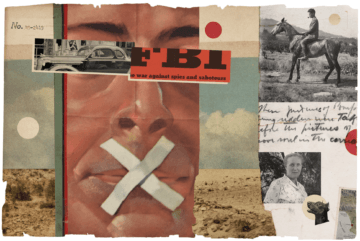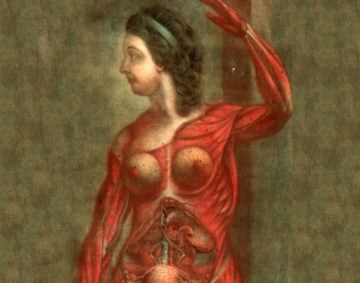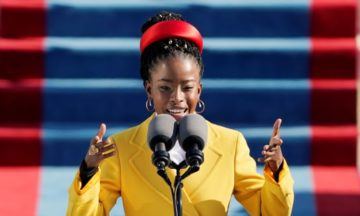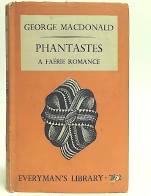Prospect Park Lament
On the first day I took secateurs to Prospect Park and cut out some forsythia.
On the second day I ate garlic by the bulb.
On the third day I heard the crackle of my lungs and remembered hiding out once
…………….. in an attic padded with fiberglass.
On the fourth day I watched the neighbors leave.
On the fifth day I ordered pineapple linzer sandwich cookies from the
…………….. shut-down tea-house.
On the sixth day, countryhouseless, I thought of Basho:
In Kyoto,
hearing the cuckoo,
I long for Kyoto.
From black bananas I made bread.
hen I gambled in the stock market with the extra black bananas.
Then my Adam’s apple became a sweet gumball fruit. Then an avocado stone.
Then I stood on my balcony and cried for the clerks and the nurses.
I cried for my city wheezing under its viral load.
I cried for the ventilators lost in the warehouses.
Then I ordered a nebulizer, Sunshine chorella tablets, meyer lemons,
…………….. 91% isopropyl rubbing alcohol, albuterol, Annie’s Shells and Cheese,
and macadamia nut milk over the internet.
Then I attended a funeral on Zoom.
Then I learned how to be a crow and a pigeon.
Then I sweat out what had entered via my thumb pad into the corner of my eye.
Then I gave up my unclean hands to the sky, and got on my clothesline
and sang for the dead.
by Anna McDonald
from National Poetry Library

 My daughter, a Pakistani American mother of two young children, married to an African American man of Jamaican parentage, is understandably excited about our new Veep-to-be, Kamala Harris. She keeps sending me articles by “desi” women like herself in relationships with Black men, who are excited about this new chapter dawning in American history.
My daughter, a Pakistani American mother of two young children, married to an African American man of Jamaican parentage, is understandably excited about our new Veep-to-be, Kamala Harris. She keeps sending me articles by “desi” women like herself in relationships with Black men, who are excited about this new chapter dawning in American history. During the mad rush of leaving, they had to find homes for 60 animals, a menagerie of horses, snakes, turtles, and various other creatures. Only two made the cut to tag along with them: their blue budgie parakeet, Bird, who went eerily still as they crossed the Sonoran Desert, and their Doberman, Kinch, who panted in the scorching heat.
During the mad rush of leaving, they had to find homes for 60 animals, a menagerie of horses, snakes, turtles, and various other creatures. Only two made the cut to tag along with them: their blue budgie parakeet, Bird, who went eerily still as they crossed the Sonoran Desert, and their Doberman, Kinch, who panted in the scorching heat. No matter how much we might try and hide it, there’s an enormous problem staring us all in the face when it comes to the Universe. If we understood just three things:
No matter how much we might try and hide it, there’s an enormous problem staring us all in the face when it comes to the Universe. If we understood just three things: A record-breaking 4,000 Americans are now dying each day from Covid-19, while the federal government fumbles vaccine production and distribution, testing and tracing. In the midst of the worst pandemic in 100 years, more than 90 million Americans are uninsured or underinsured and can’t afford to go to a doctor when they get sick. The isolation and anxiety caused by the pandemic has resulted in a huge increase in mental illness.
A record-breaking 4,000 Americans are now dying each day from Covid-19, while the federal government fumbles vaccine production and distribution, testing and tracing. In the midst of the worst pandemic in 100 years, more than 90 million Americans are uninsured or underinsured and can’t afford to go to a doctor when they get sick. The isolation and anxiety caused by the pandemic has resulted in a huge increase in mental illness. “K
“K In all its varied symptomology, menopause put me on intimate terms with what Virginia Woolf, writing about the perspective-shifting properties of illness, called “the daily drama of the body.” Its histrionics demanded notice.
In all its varied symptomology, menopause put me on intimate terms with what Virginia Woolf, writing about the perspective-shifting properties of illness, called “the daily drama of the body.” Its histrionics demanded notice. Build a working coalition
Build a working coalition  The
The 
 Like his many previous literary endeavors, Turkish novelist Orhan Pamuk’s new book Orange is about Istanbul, or rather how the city appears in his eyes. The book consists of color photographs of the city’s streets which Pamuk has been perpetually constantly taking for several years, always with the same technique and choice of motif. The result is a visual essay dedicated to the alleys and corners of his hometown. Over the author’s more than six decades living in Istanbul, Pamuk has witnessed the constant transformation of the city, notably from the gradual change from orange street lamps to white over the last ten years or so, not that the actual duration of the change matters. What does matter is the stark visible disappearance of the yellow-hued fluorescent lamps bringing a loss of the magical moments in a city landscape he dearly loves; the change is one he accepts only with some bitterness.
Like his many previous literary endeavors, Turkish novelist Orhan Pamuk’s new book Orange is about Istanbul, or rather how the city appears in his eyes. The book consists of color photographs of the city’s streets which Pamuk has been perpetually constantly taking for several years, always with the same technique and choice of motif. The result is a visual essay dedicated to the alleys and corners of his hometown. Over the author’s more than six decades living in Istanbul, Pamuk has witnessed the constant transformation of the city, notably from the gradual change from orange street lamps to white over the last ten years or so, not that the actual duration of the change matters. What does matter is the stark visible disappearance of the yellow-hued fluorescent lamps bringing a loss of the magical moments in a city landscape he dearly loves; the change is one he accepts only with some bitterness. The daily press conferences from Downing Street since March 2020 underline the prominence given to epidemiologists, behavioural scientists and the medical profession in driving policy reaction to the Covid-19 crisis. This may be evidence of a welcome return of scientific expertise to the heart of government after a period when much of the population and elements of the government had, in the words of
The daily press conferences from Downing Street since March 2020 underline the prominence given to epidemiologists, behavioural scientists and the medical profession in driving policy reaction to the Covid-19 crisis. This may be evidence of a welcome return of scientific expertise to the heart of government after a period when much of the population and elements of the government had, in the words of  We still don’t have all the technologies we need to address climate change.
We still don’t have all the technologies we need to address climate change. L
L Hester Street contains no muckraking impulse to uncover the “truth” of How the Other Half Lives. She rejected any sort of outsider gaze in favor of an awareness to the cadences of Yiddish, the shimmering falling leaves as an immigrant son and his father learn how to play baseball in a sun-kissed park, the loving camera effect gotten out of Keats’s blindingly over-exposed white shirt. It’s a perceptiveness that doesn’t advertise how perceptive it is. Much of Hester Street is consumed with the ordinary problem of how Carol Kane should style her wild hair, what raiment she should cross Delancey Street in, which hat to wear. Nearly a century after the events of Hester Street, in Crossing Delancey (my favorite Silver film, a rom-com set in contemporary 1988 New York), Amy Irving is obsessed by the same problem: whether to wear a Diane Keaton-ish bowler hat that was gifted to her by the owner of a pickle shop (Peter Riegert). The past constantly revives in Silver; newer generations never forget where they came from; time ebbs and flows in and out of style.
Hester Street contains no muckraking impulse to uncover the “truth” of How the Other Half Lives. She rejected any sort of outsider gaze in favor of an awareness to the cadences of Yiddish, the shimmering falling leaves as an immigrant son and his father learn how to play baseball in a sun-kissed park, the loving camera effect gotten out of Keats’s blindingly over-exposed white shirt. It’s a perceptiveness that doesn’t advertise how perceptive it is. Much of Hester Street is consumed with the ordinary problem of how Carol Kane should style her wild hair, what raiment she should cross Delancey Street in, which hat to wear. Nearly a century after the events of Hester Street, in Crossing Delancey (my favorite Silver film, a rom-com set in contemporary 1988 New York), Amy Irving is obsessed by the same problem: whether to wear a Diane Keaton-ish bowler hat that was gifted to her by the owner of a pickle shop (Peter Riegert). The past constantly revives in Silver; newer generations never forget where they came from; time ebbs and flows in and out of style.